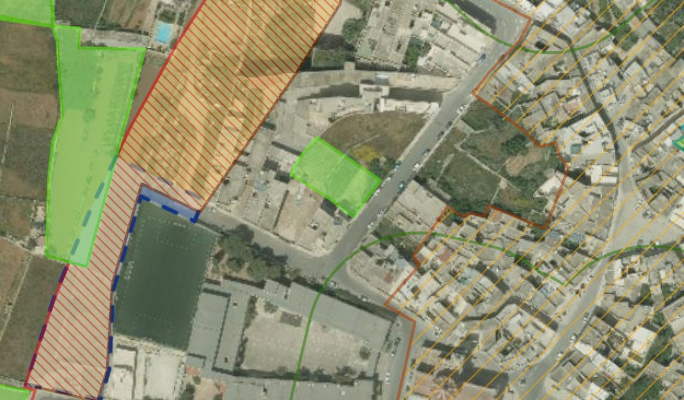By James Debono
Copyright maltatoday

Land behind the Qrendi primary school was included in the development zone in 2006 on condition that an archaeological study would confirm its developable status.
But nearly two decades later, no such study has been undertaken, even as a zoning application seeks to set the planning parameters for the site.
The zoning application presented by Michael Bugeja’s Tan-Nadur Limited, is for a five-storey residential development and new access road.
Moreover, the application, first submitted in 2020 and reissued for public consultation last month, covers less than half of the 8,500sq.m site that was conditionally added to the development zone.
This means that archaeological studies, which the Superintendence for Cultural Heritage is likely to request during the processing of the application, will not cover a substantial part of the site outside the scope of the current application. In this way, if development is allowed on part of the land, it could still compromise the context of any future discoveries on the rest of the site.
Objectors demand study over entire site
Most of the 250 objections, including those by the locality’s residents’ association, have focused on the visual and social impact of a five-storey block rising behind the school grounds in close proximity to the parish church in the quaint locality.
But the lack of archaeological studies has been highlighted in numerous objections, including one filed by architect Tara Cassar and a group of Qrendi residents.
Cassar contends that setting any planning parameters before an archaeological assessment of the entire site is carried out would be premature.
Since the application only covers part of the land added to the development zone, she warns that approval could “lead to the uninformed parcelling of this site.” This, she argues, would represent a fragmented approach to planning, with serious ramifications for the safeguarding of any remains that may exist.
Cassar insists an archaeological assessment must be conducted immediately to determine whether the entire site has enough value to warrant its exclusion from the development zone.
The potential significance of the site was also raised by archaeologist and conservation expert Reuben Grima. He cited the Museum Annual Report of 1956–1957, which refers to the remains of a prehistoric building in a field at the back of the Qrendi Primary School. These consisted of globigerina limestone megaliths forming part of a wall, partly obscured by a rubble boundary wall. The report noted the remains were photographed and included in the list of ancient monuments for future reference.
On this basis, Grima called for a “thorough archaeological survey” to determine further steps to protect the area, including possible inclusion within Qrendi’s urban conservation area.
Superintendence warnings
In 2021, the Superintendence of Cultural Heritage (SCH) had already flagged risks in relation to the project. It warned that the proposed extension of Triq Filippu Gutenberg towards the north would take the road close to recorded megalithic remains. The SCH noted that ground disturbance in this area could uncover cultural heritage features, requiring changes to the proposed drawings.
The Superintendence also referred to a vernacular structure on site, which includes a niche with a Madonna in high relief, framed with a cartouche and topped with a cathedral cross. Since then, the developers have included the restoration of the chapel as part of the project.
Planning Authority’s response
Asked why the application was validated before archaeological studies on the entire site are finalised, a Planning Authority spokesperson said it was validated in line with provisions of the legal notice regulating zoning applications issued in 2007, which only require the submission of a site plan, maps showing the proposed change, legal proof of ownership, and notification to other owners of the site.
The legal framework does not spell out when archaeological studies should be submitted even when the inclusion of these sites in the development was conditional on the results of these studies.
The PA spokesperson confirmed that no archaeological studies have so far been conducted, adding that the application is still at the initial stages and subject to assessment.
But since the Superintendence for Cultural Heritage is always consulted, archaeological studies are in practice always conducted during the zoning application process.
In this case, with only part of the site subject to the application, objectors fear that the investigation would not be a full and comprehensive one.
So far, none of the 16 sites added to the development zone in 2006 on condition of an archaeological study have been excluded from the development zone because of their archaeological value.
While no zoning applications have been issued for four sites in Marsa, Marsaxlokk, Mġarr and Żebbiegħ, the other sites have been entirely or partly developed, with archaeological studies resulting in the recording of minor finds such as agricultural trenches, or in modifications to project layouts where more substantial discoveries were made.



